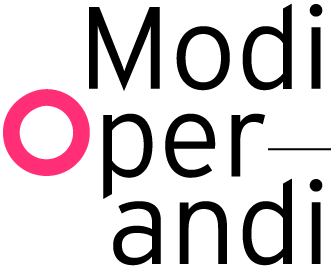BEAUTY IN CHAOS
As stated, the Situationists deliberately used play as a means to overturn and transgress societal conventions. Similarly, we can also see acts of transgression in our contemporary society. Often these acts of play are ephemeral and temporal, leaving a barely visible trace on the landscape. Skateboarding and parkour are just two examples of how space is re-negotiated through the physical engagement with objects in the landscape. Whilst the acts themselves do not alter the spatial construct significantly or even leave physical traces behind, the acts could not exist without the engagement with and transgression of the borders and thresholds presented along the urban surface.[19]
The transgressive act brings to light the skateboarder’s presence. As an active participant within the urban environment, the transgressive act of the skateboarder; jumping walls, fences, steps; subverts the physical environment by mis-using urban elements. The skateboarder is therefore able to re-construct and alter the space through the transgressive act.
To transgress is to go beyond, break, infringe or violate the limits of society. These limits can be expressive of behaviour, norms, laws, culture and space. For philosopher Michel Foucault transgression is not necessarily destructive or rebellious, but is an act of revealing. In his Preface to Transgression, Foucault explains that there is a necessary relation between transgression and the limit, as transgression ‘carries the limit right to the limit of its being; [and] forces the limit to face the fact of its imminent disappearance’.[20] Transgression allows these social limits and boundaries to become visible by revealing that which was never considered a possibility. In architecture, it is the border or the boundary that becomes most relevant with respect to transgression, as it deals with the notion of opposites; inside and outside, public and private. Since the border is the space that facilitates transgressive acts, it is through play that these borders are revealed. Whilst transgression is often linked to sin or an act of crime, it can also be considered as being beneficiary and purposeful. For example, handing out free food and clothing can also be regarded as a means to reveal the structure of consumerism within our society and acts to subvert these notions. Whilst graffiti is often perceived as detrimental, it could also be considered as a free outdoor art gallery, a highly-stylised re-decoration of the streets. Transgression seeks to find beauty, use and opportunity in disorder and chaos.
As Gil Doron describes in The Dead Zone and the Architecture of Transgression, these transgressive acts are most evident in the spaces that we have labelled as ‘void’. These forgotten, isolated and forbidden spaces become appropriated by groups at the margins of our society,[21] who transgress the space by radically altering its use. Doron also states that it is not only the occupants that transgress the space, but the space itself becomes transgressive by playing with the notion of location and time. ‘The “Dead Zones” are transgressive not only because they exist on the boundary of the city centres. They are also transgressive exactly for the opposite reason, because they transgress any desire to locate them geographically, any confinement, of putting them in (a) place.’[22] For example, a residential block maintains the function of living during the mornings and evenings, but becomes a dead zone during the day as their occupants leave. Through the movement and occupation of its inhabitants, the spaces themselves start to play with and alter their intended programme. Unoccupied, these lively spaces temporally become spaces of silence.
The notion of space, time and living conventions also became elements of play within Constant Nieuwenhuys’s New Babylon. The utopian model for living rejected the conventional notions of the urban plan, departing from the traditional neighbourhood model and the functionalist’s ‘ville verte’.[23] Instead, rather than submitting to the forced construct of designated parks, Constant sought to control nature, subverting it with new materials and technology. By defining the (then) current principles of living, but projecting these onto a society dominated by the ‘homo ludens’, Constant was able to go beyond the conventional notions of living in order to construct a new set of rules. It was a spatial plan in which collective housing was detached from the ground and suspended from a structure above, freeing the ground for movement and transport. As Constant wrote, ‘the different floors will be divided into neighbouring and communication spaces, artificially conditioned, which will offer the possibility of creating an infinite variety of ambience’s, facilitating the “dérive” of the inhabitants and their frequent chance encounters’.[24] The control over climate, light and sounds was a step towards the idealised utilitarian life of the 1960’s. But while the ‘homo ludens’ in New Babylon is free to change the spatial conditions and ambiance of their environment, they did remain trapped within the constraints of Constant’s utopian game.
